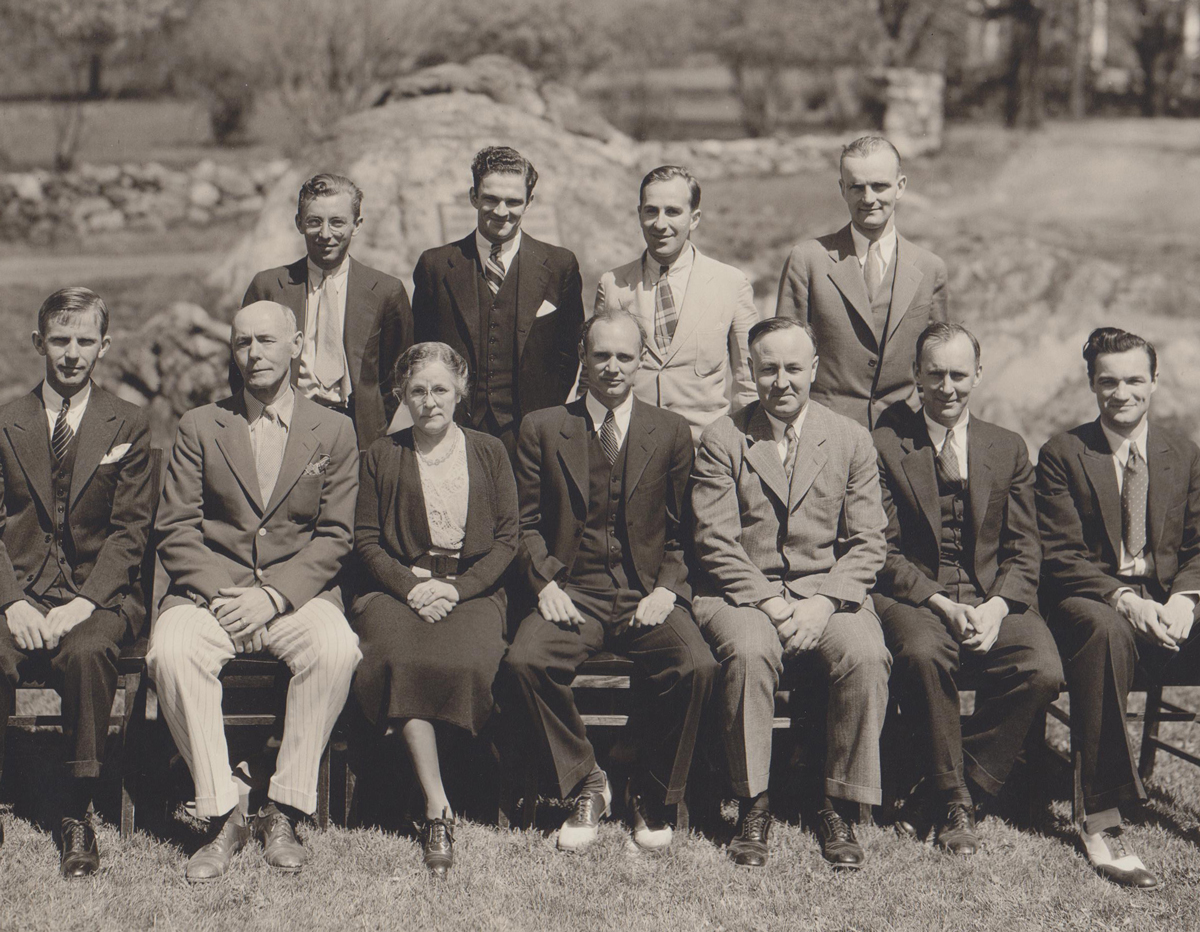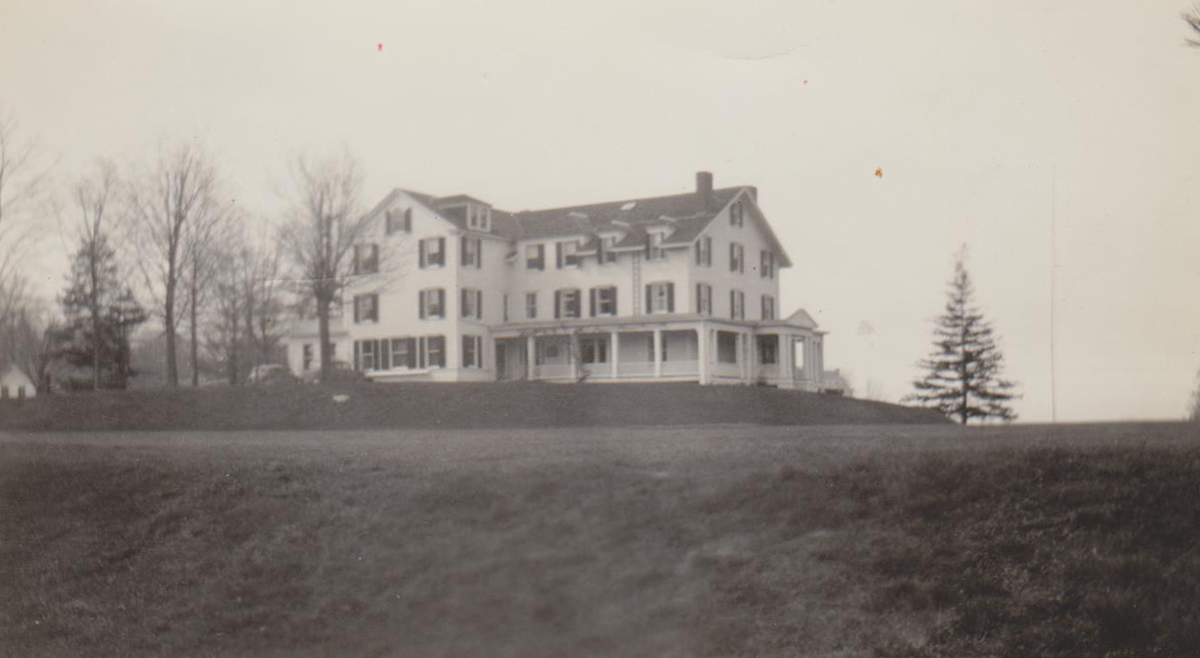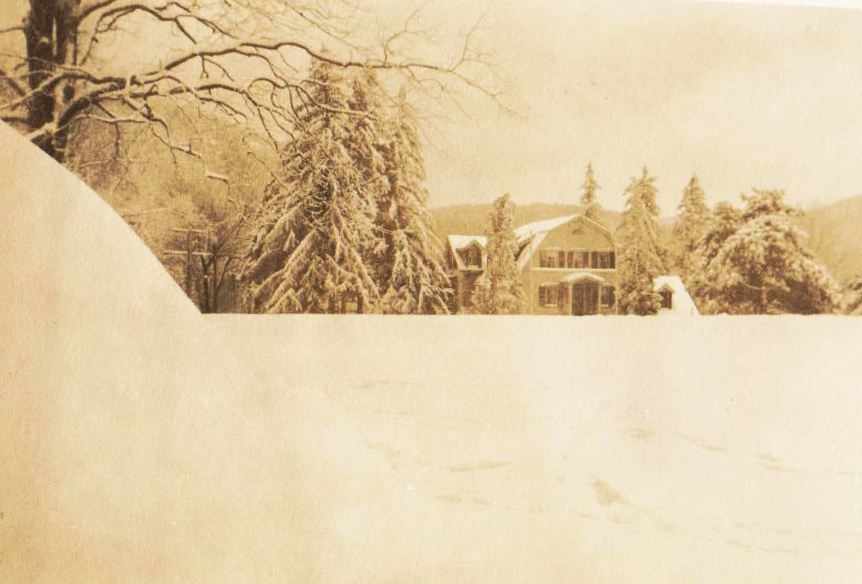The years following WWI were peaceful and prosperous for most of the nation. It was also a period when Storm King witnessed many important changes that helped cement its growing reputation as a highly selective college preparatory school. For example, 1923 was the year that saw the School’s name change from the Stone School to The Storm King School. It was also the time when Storm King discontinued the Lower School and a provisional charter from the New York State Board of Regents as a four-year secondary institution soon followed. The School also built its first infirmary and became a not-for-profit institution led by nine trustees—a structure of governance that still stands today.
This period of institutional change was a prelude to the nearly two decades that followed under the leadership of Storm King’s sixth headmaster Anson Barker, who served from 1932 – 1951. Barker, an Amherst graduate, and an alumnus of Worcester Academy came to the Mountain following eight years at the Lawrenceville School and several summers at Harvard. It was the beginning of the Great Depression and a time when the School benefited greatly from innovative business practices such as growing its own food as well as the relationships Mr. Barker nurtured with several prominent families who resided on the Mountain.

Teachers of 1934-1935 School year in front of Memorial Rock. Headmaster Anson “Ank” Barker is sitting to the right of Miss Margaret Clark, the School’s first female instructor.
One such relationship was with Dr. Ernest Stillman, who was also the patron of neighboring Black Rock Forest. In the late 1800s, the Stillman family, drawn by the beauty of the Highlands, began to purchase tracts of mountain land including homesteaders’ farms in and around the School that had fallen into disuse. By the late 1920s, enough property had been acquired to form Black Rock Forest, which Dr. Stillman designated as a resource for forest research and demonstration.
With the support of Dr. Stillman, Mr. Barker succeeded in “retaining a strong faculty and maintaining a personal regard for every boy” for which he was known throughout the difficult years of the Great Depression. Meanwhile, he had also laid the foundation for the School’s integral relationship with Black Rock Forest that has carried into the present day.

Old Main 1935
It’s only fitting that Mr. Barker initiated the first Mountain Day in 1932, beginning a beloved tradition that continues today. According to the November 3, 1932 edition of The Quarry, “the whole School turned out for a hike through Black Rock Forest and a picnic lunch on a recent Friday, when classes were called off after the third period—an innovation of Mr. Barker’s.”
Alumnus J. Halsey Smith, class of 1946, who was interviewed for a previous issue of On the Mountain magazine, had many fond memories of his time at the School during Barker’s tenure and kept a special place in his heart for “King’s Big Topper.” During the years of the Depression, it is said that Headmaster Barker took the decision to grow vegetables for the students to eat both on campus and at a neighboring farm. “The business manager and Ank decided that we needed a farmer named Clem to help the boys grow and harvest the vegetables, and who would keep the dairy cows, and so forth, as milk was also a necessity,” explained Mr. Smith. “Clem also got the idea that we should raise a wild boar! So we nicknamed him “King’s Big Topper.”
“One day Clem said we were taking him to the Orange County Fair. So, we pulled him out of his stall, washed him down, and we even polished his hooves. At the end of the day “King’s Big Topper” won the blue ribbon! All the work we had done getting the mud off that boar had paid off. We had done what we could, and he won. Then he went back to his sty and eventually became dinner. The School surely had some difficult years back then, and we all made it through thanks to Ank Barker and the support of Dr. Stillman,” he recalled fondly.

1940’s Snow Storm

